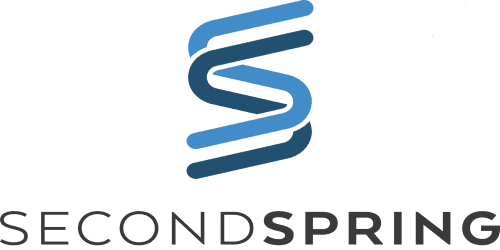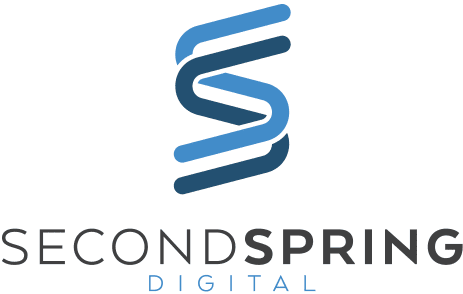Generative AI. Chat-GTP. Large Language Models.
As a health clinic, it can be tricky to keep pace with these new trends. There are bias, privacy and security risks to consider. It can be tempting to just avoid AI for allied healthcare practice management.
But take heart. There are some opportunities to harness AI in your clinics that are ready right now. Whether your focus is therapy, chiropractic, naturopathic or physiotherapy, there are paths forward. Here are five AI tools you can try right now – in 2024 – to help your clinic run more smoothly.
By acting now, you can make progress and learn, while managing the inherent risks too.

#1 – Personalized Communication
Ongoing educational campaigns are an excellent way to provide value to your contacts. In allied health practice management, a personal connection with your patients is crucial.
Your patients (past, present and potential future) value helpful, interesting content from you. AI-driven tools can now make that process easier. They can assist in content creation, personalization, and contextual follow-up.
These systems allow you to keep an ongoing conversation with your patients. This strengthens their connection with your practice. It can increase your patient’s wellness, and your average patient visits, both at the same time.
AI-Powered Tools to Explore: Constant Contact, HubSpot, Salesforce Marketing Cloud
Let’s dig into these a bit deeper. Constant Contact leverages AI to suggest the ideal times to send emails. HubSpot uses AI technologies to power its chatbots and personalize your patient interactions. Salesforce Marketing Cloud uses AI to tailor marketing content based on engagement patterns.
#2 – Real-Time Online Interactions
AI-powered chatbots allow clinics to interact with prospects and patients online in real-time.
These tools enable answering questions, providing information, and booking appointments in real time. With the addition of AI, these transactions need less valuable time from your team.
Tools to Try: LivePerson, Smith.ai, Intercom
Here is more use case detail. LivePerson and Smith.ai offer AI-supported live chat services. This helps to address patients’ inquiries promptly and accurately. Intercom offers personalized messaging for sales, marketing, and support.
#3 – Streamline Your Content Creation
In the world of digital marketing and patient education, content is king. Yet, the creation process can be daunting. Brainstorming topics, drafting, and editing can all be stress-inducing. Generative AI to the rescued.
When it comes to writing, Gen AI (such as ChatGPT or Gemini) can act as your team of ‘infinite interns‘.
Gen AI can help you with content ideas, outlines, drafting, editing, and metadata.
It’s important to note, however, that while GenAI is a follower, not a leader.
Like interns everywhere, it cannot create valuable, optimized healthcare content in a vacuum. But, when AI teams up with clinical, content and SEO expertise, you can get better and/or faster content.
Tools to Try: Grammarly, SEMRush Writing Assistant, Jasper
Grammarly, an AI-based writing assistant, can improve your content’s clarity, engagement, and correctness. SEMRush Writing Assistant makes content creation easier by providing real-time SEO recommendations. Meanwhile, Jasper helps entrepreneurs and marketers craft compelling copy as an ‘AI copilot’.
#4 – Automate Routine Clinic Tasks
In the demanding environment of allied health clinics, the work is endless. Sometimes it can feel like bailing a boat with a hole in it. Automating routine administrative and operational tasks is appealing for health practice management.
There are several AI-powered tools available to increase efficiency and quality. Workflow tools to create workflows as a series of digital tasks, initiated by a trigger. Robotic Process Automation (RPA) allows you to script repeating series of user actions. Gen AI can even be used to generate custom scripts, if you understand the concepts of programming. All of these tasks are now much easier with AI assists.
Utilizing AI tools like Zapier and ChatGPT, along with Robotic Process Automation (RPA) technologies, can transform these tasks from time-consuming necessities to streamlined, automated processes. Here’s a brief overview of how these tools can be leveraged effectively:
Tools to Try: Zapier, ChatGPT, Power Automate
Zapier makes it easy to connect and automate the apps clinics use daily. You can streamline and automate routine tasks without manual input.
ChatGPT can quickly generate scripts or automate routine calculations and communications. This can streamline tasks that would otherwise require manual effort and clumsy spreadsheets.
Power Automate is Microsoft’s “comprehensive, end-to-end cloud automation platform powered by low code and AI.”
#5. Enhance Patient Care without the Hassle
AI is starting to make it easier to juggle patient care and health practice management. AI-powered tools are emerging to help in the treatment room. Therapists, chiropractors, naturopaths and physiotherapists will all want to stay tuned here.
Tools to Try: Jane’s Smart Preview (currently in Beta), Practice Better’s AI Charting Assistant
Jane’s Smart Preview offers a generated chart summary to support effective follow-up treatments. Practice Better brings AI capabilities to the telehealth landscape, helping to manage charting.
Adding more digital is central to modern health practice management.
But – as the clinic owner, you need to ensure that your chosen AI vendor is committed to safeguarding patient data and managing other risks that can emerge with Generative AI. This ensures your clinic gets the benefits of the AI revolution while protecting your patients and your business.
Here are the AI principles for Jane, as an example. We recommend you review a vendor’s AI principles and confirm your alignment before deploying AI-powered tools.

